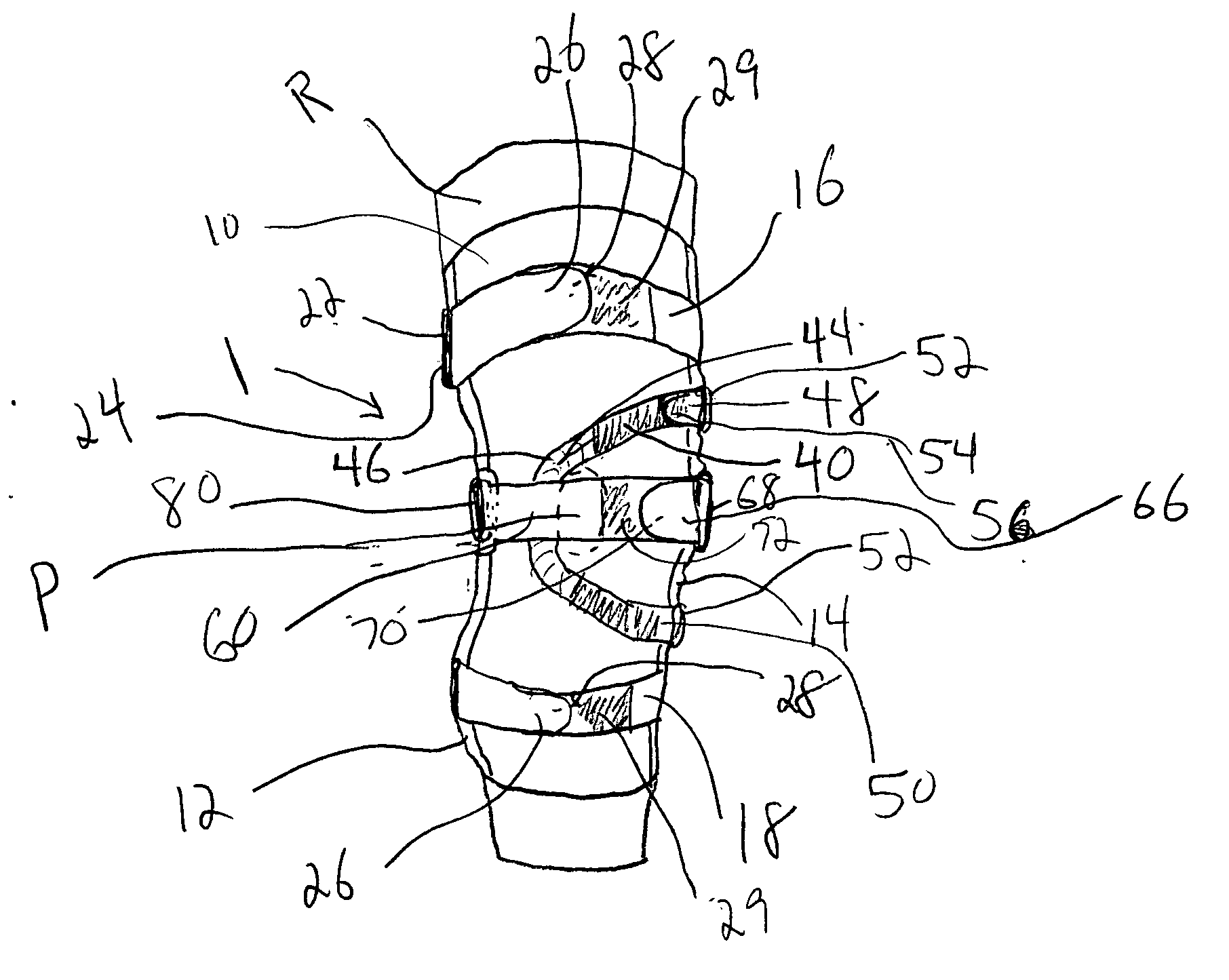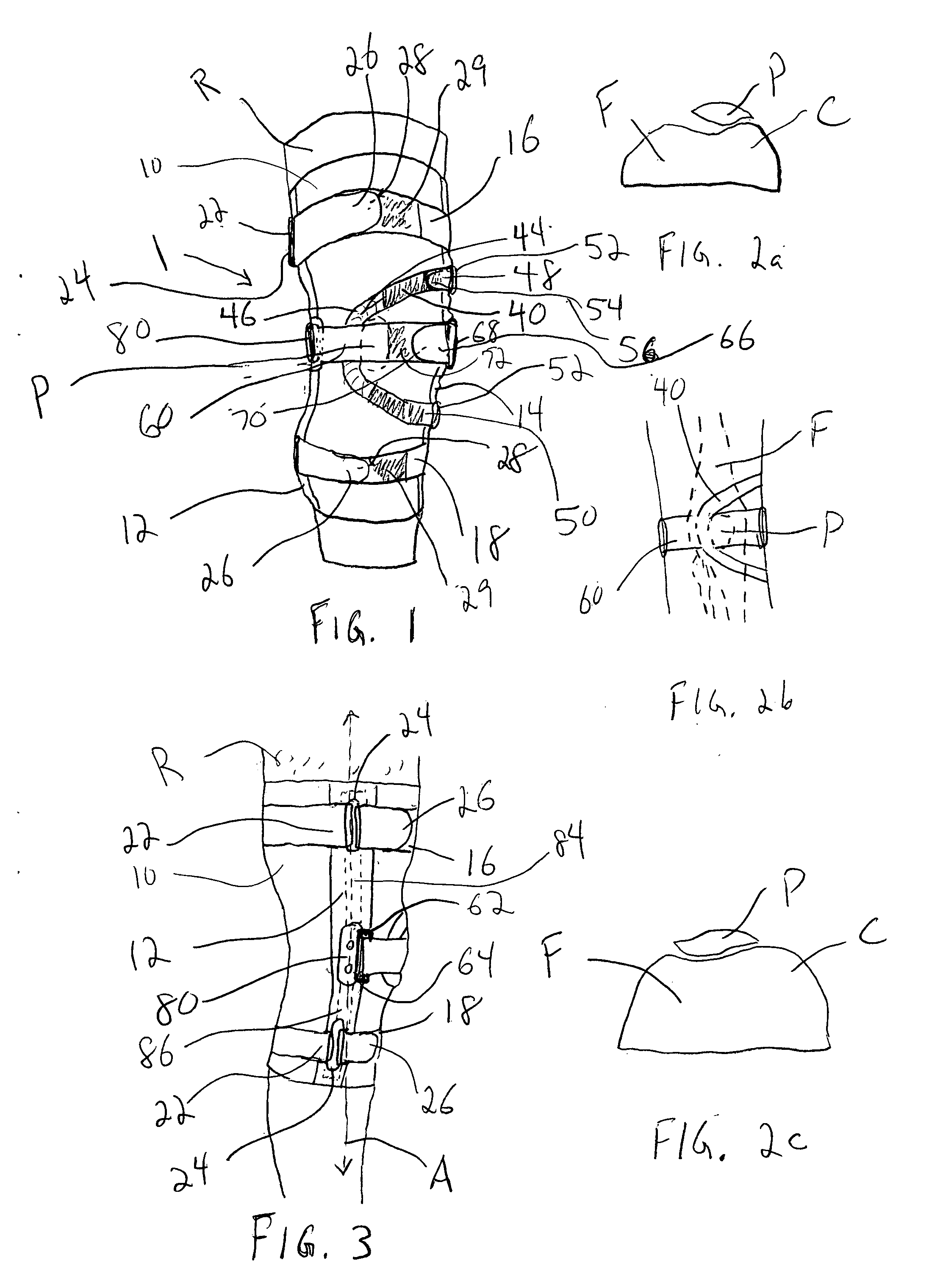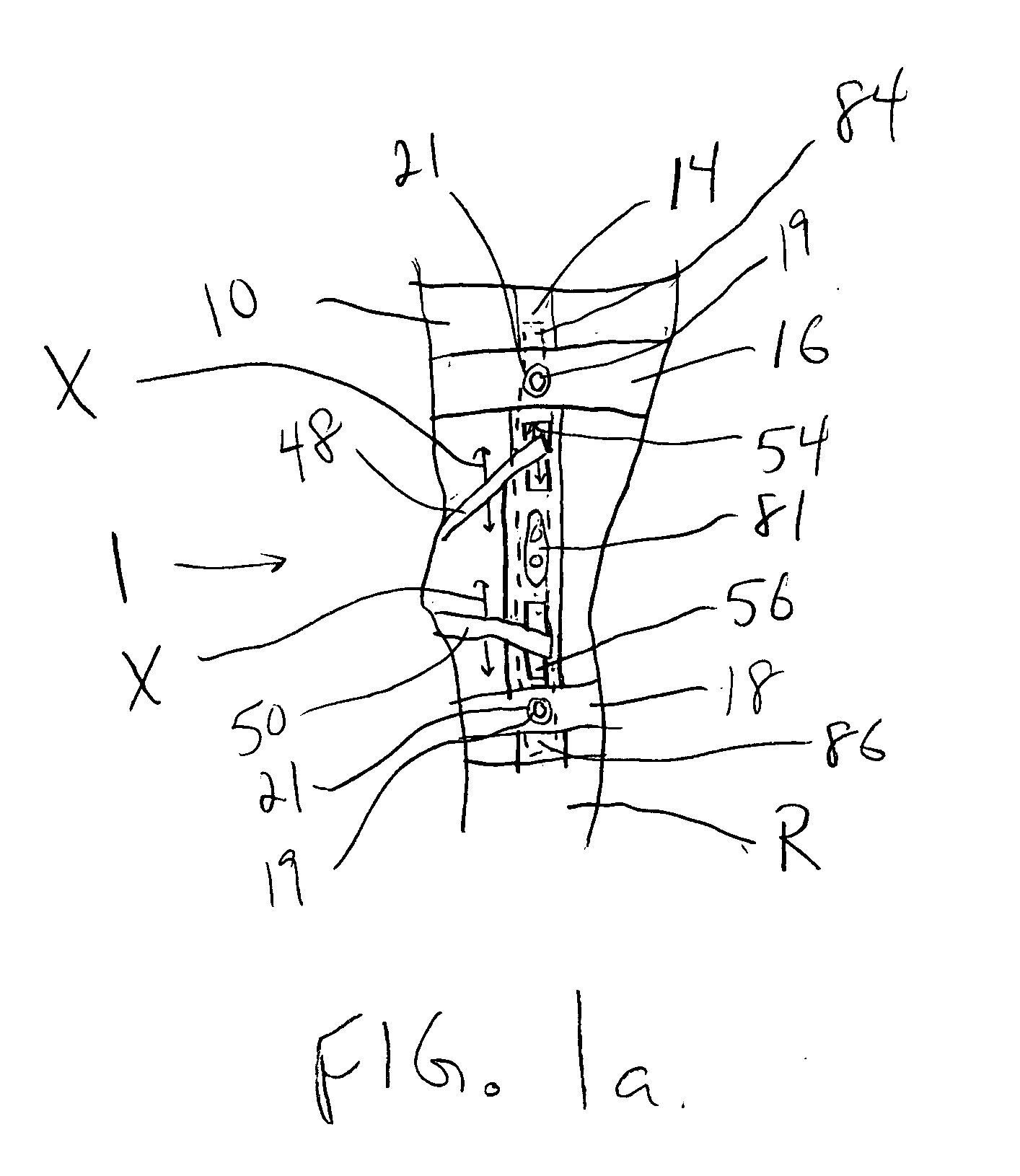Knee orthosis and orthotic method
a technology of knee and orthotic joint, applied in the field of knee orthosis and orthotic method, can solve the problems of medial corrective traction, pain and dysfunction, and limited rehabilitation of weakened joints,
- Summary
- Abstract
- Description
- Claims
- Application Information
AI Technical Summary
Benefits of technology
Problems solved by technology
Method used
Image
Examples
Embodiment Construction
[0054] As illustrated in the accompanying drawings and discussed in detail below, one aspect of the present invention is directed to a knee orthosis that, when used, provides continued medial traction to stretch out a patella's lateral connective tissue. By allowing progressive, intermittent and repeated stretching of the patella's lateral connective tissue, it increases function and speeds rehabilitation.
[0055] The knee orthosis of this aspect also directs inward pressure on the patella to increase patellofemoral surface contact area. This inward pressure accordingly reduces the damage and pain associated with patellofemoral joint disorders by evenly distributing the overall patellofemoral joint stress along a greater surface contact area, and thereby further speeds rehabilitation that would otherwise be hindered by greater pain and joint damage.
[0056] In one embodiment, the knee orthosis of the present invention provides medial and inward patellar traction. Referring to FIG. 1, ...
PUM
 Login to View More
Login to View More Abstract
Description
Claims
Application Information
 Login to View More
Login to View More - R&D
- Intellectual Property
- Life Sciences
- Materials
- Tech Scout
- Unparalleled Data Quality
- Higher Quality Content
- 60% Fewer Hallucinations
Browse by: Latest US Patents, China's latest patents, Technical Efficacy Thesaurus, Application Domain, Technology Topic, Popular Technical Reports.
© 2025 PatSnap. All rights reserved.Legal|Privacy policy|Modern Slavery Act Transparency Statement|Sitemap|About US| Contact US: help@patsnap.com



